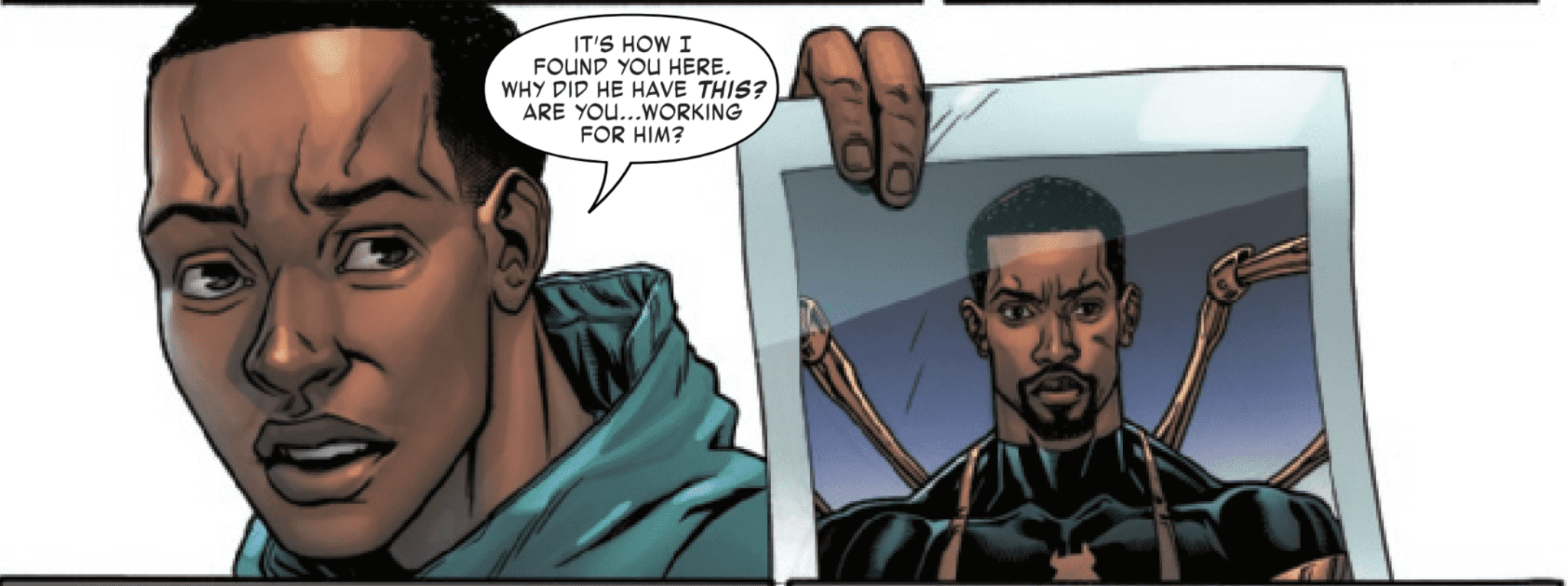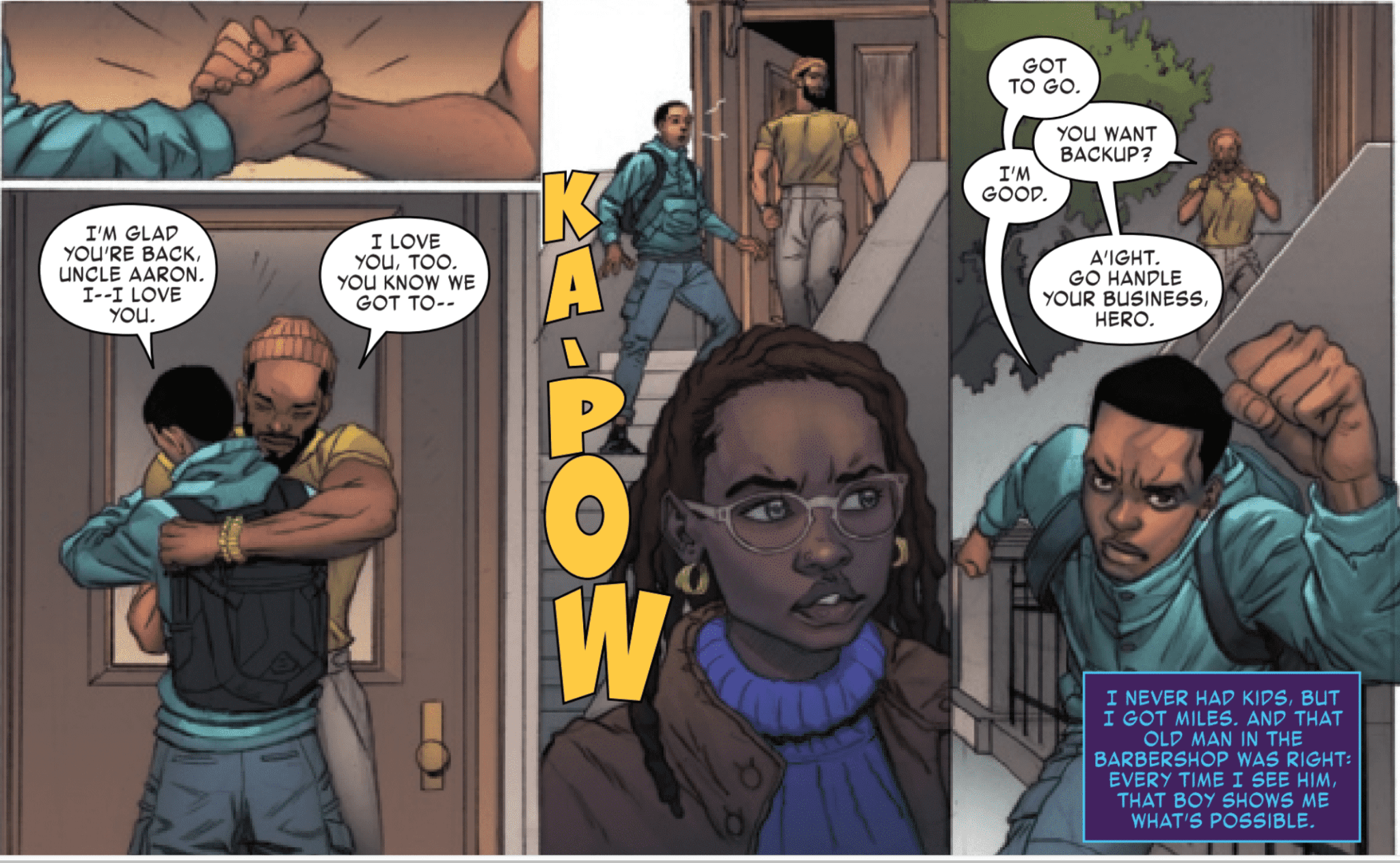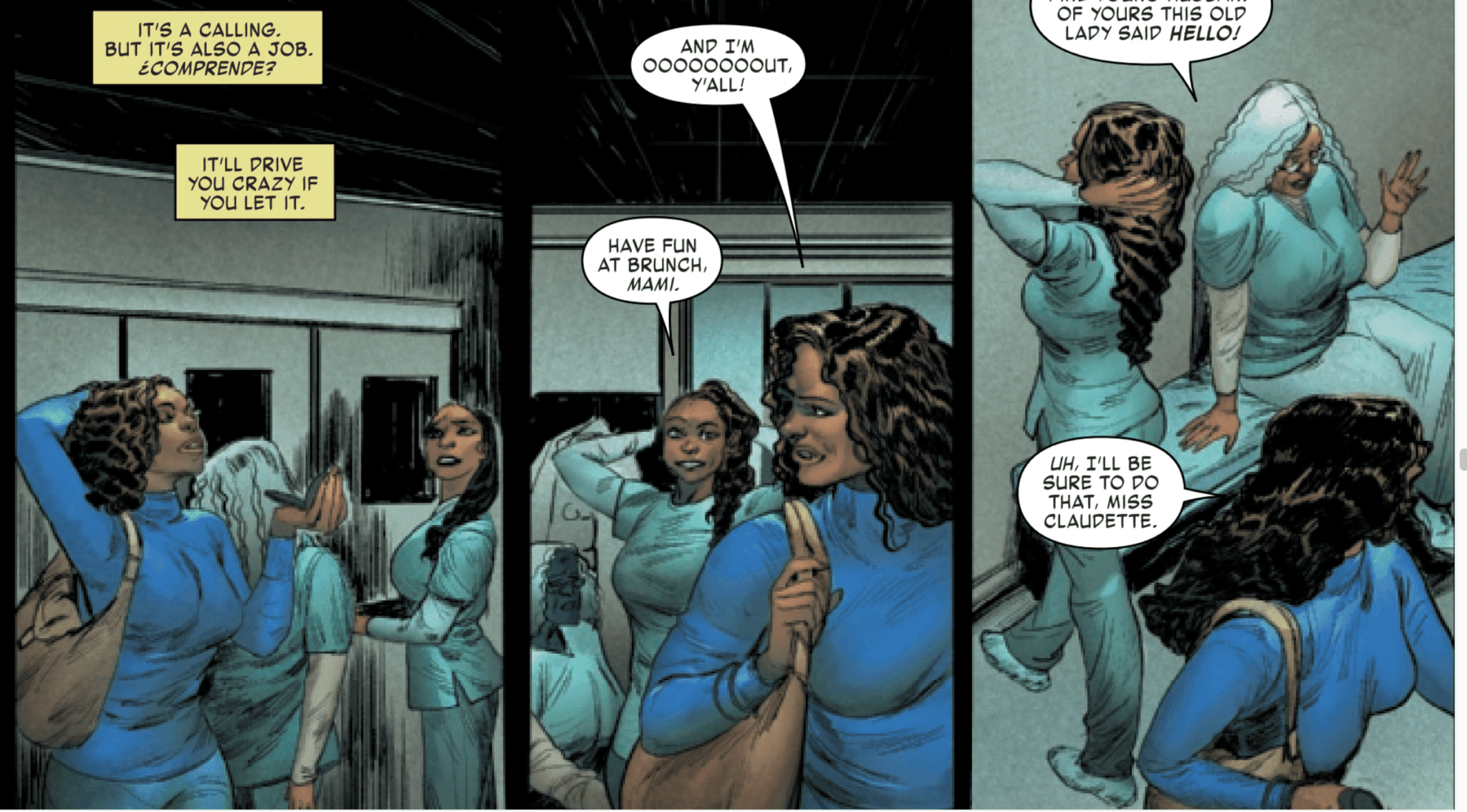If you liked Spider-Man: Into The Spider-Verse, you’ll probably enjoy Miles Morales: Spider-Man #7. Both stories focus on Miles Morales’ attempt to balance his personal life with his adventures as a superhero.

Miles Morales: Spider-Man #7
Writer: Saladin Ahmed
Pencils: Ron Ackins
Artists: Dexter Vines (inks and PP. 1-5,) Alitha E Martinez (PP. 6-10,) Vanesa R. Del Ray (PP. 11-16) and Javier Garrón (PP. 16-20)
Colorists: David Curriel & Erick Arciniega
Letter: VC’s Cory Petit
The success of Into The Spider-Verse makes it difficult to evaluate any story featuring Miles Morales. It’s especially easy to compare issues of Miles’ new solo series, written by Saladin Ahmed, to the fan-favorite film. After all, the first installment of Miles Morales: Spider-Man and the movie were only released four days apart. Every time Ahmed does something well, praising him for borrowing from the film is the natural response. As the series continues, the shadow of Spider-Verse will likely fade. But, for now, the work of directors Bob Persichetti, Peter Ramsey, and Rodney Rothman clearly influences Ahmed’s take on the titular character.
Miles Morales: Spider-Man #7 is no exception. From the importance of the dynamic between Miles and his uncle Aaron Davis to the focus on Miles’ relationships with his parents, this comic feels like a continuation of the film. The issue begins with a reunion between Miles and his uncle and, despite some tension caused by Aaron’s past as a criminal, the scene consistently features heartwarming moments. Using narration from Aaron’s perspective, Ahmed wisely shifts the focus away from Miles. Most readers already know how the young hero feels about his uncle. By turning the spotlight on Aaron and his internal thoughts, the reader gains a more complete understanding of the relationship.

Every exchange between Miles and Aaron is intricately layered. For a moment, Ahmed delves into the sociopolitical issues surrounding a young multiethnic hero and a black man whose life choices had turned him into a career criminal. Though Davis has opted for the straight and narrow, he’s somewhat jaded about life in modern America. When Miles tells his uncle that Tombstone is going to prison, Aaron retorts, “Congratulations. Another black man going to prison. Must be Tuesday.” With just one line, Ahmed shifts the scene into a higher gear. Later on, Aaron narrates, “my nephew cares so much about right and wrong. He really thinks he can fix all this…garbage around us.” As with the aforementioned line, Aaron touches on a significant real-world issue. It would have been powerful to see Ahmed extensively explore the criminal justice system or the challenges faced by black men in modern America. But, with the limited space of a single issue, he didn’t have time to do so here. Still, these moments offer fertile ground for future development.

Ahmed doubles down on his usage of various narrators when he shifts to the perspective of Miles’ mom, Rio Morales. As a nurse, Rio understands the weight of the responsibility that comes with helping people. Subsequently, by having Rio narrate while she works, Ahmed still provides a glimpse into Miles’ subconscious. When describing her workalike, Rio says, “it’s a calling. But it’s also a job….It’ll drive you crazy if you let it.” It’s a safe bet that many superheroes feel that way, too. Hopefully, Ahmed will dive further into the similarities between Miles’ and Rio’s jobs as, respectively, Spider-Man and a nurse. If not, he succinctly compares the two heroes and their feelings about the pressures they face.

Unlike other issues of this series, a committee of artists tells the visual story in the latest installment. Though it’s a standard length comic book, Miles Morales: Spider-Man #7 features four artists, who are each responsible for five pages. Whether the reader likes this style depends on their artistic preferences. On one hand, dividing the issue evenly makes each section feel like a vignette. Each illustrator’s contribution feels like an individual component with a distinct flavor.
Martinez’ excerpt looks like a standard Marvel comic, which pairs well with the story on the page; Miles and Bombshell fight a killer drone and bright colors, both on the heroes’ costumes and in the drone’s lasts, separates the scene from the other grounded parts of the issue. In Del Ray’s snippet, bright colors are fairly absent in the dreary hospital setting. Garrón, typically the primary artist for the series, illustrates the last few pages. Here, using cool colors and visual distortion effects to accentuate the sci-fi elements of the plot. A robot attacks Miles and, using a shiny aura, Garrón makes the mysterious antagonist look like Doctor Manhattan. The visual effects and the ease with which he defeats Miles, immediately establish the robot as a legitimate threat. Garrón takes a typical evil robot and turns it into an intriguing villain.
While some readers might appreciate this style, others will criticize the disjointed feel of the issue; each section is notably disparate from its predecessor. As a result, flipping through Miles Morales: Spider-Man #7 can feel like a jarring reading experience.

The influence of Into The Spider-Verse is undeniable in Miles Morales: Spider-Man #7. In several ways, Ahmed expands on the movie’s strengths. The latest installment of this series kicks off a new arc and Spider-Fans should be excited to see how Ahmed’s vision for the titular character continues to become clear. Where do you want to see him go with the series?

